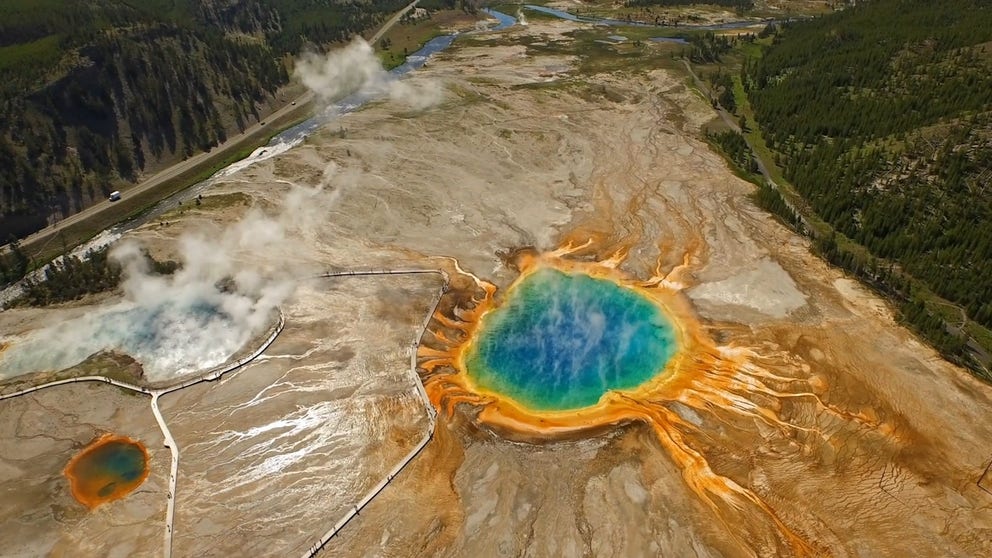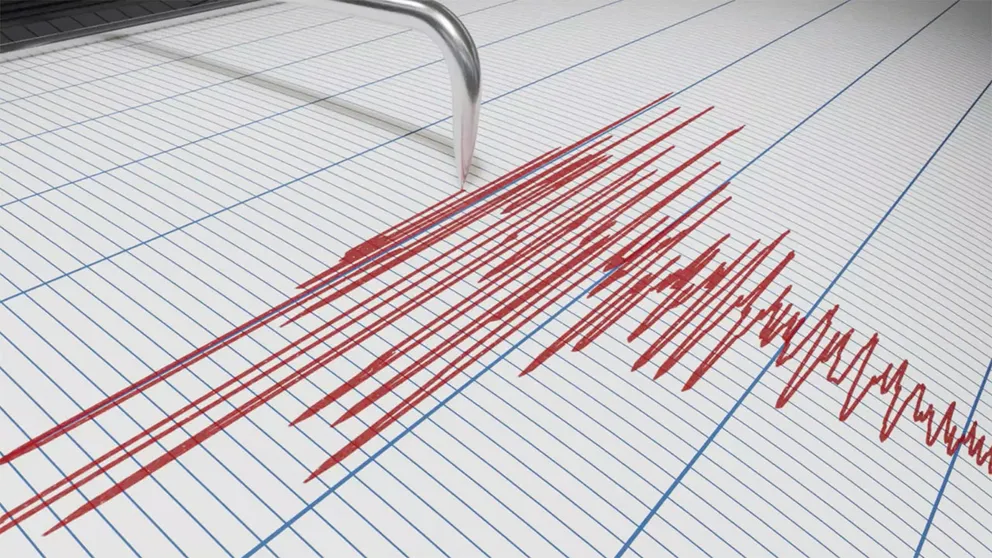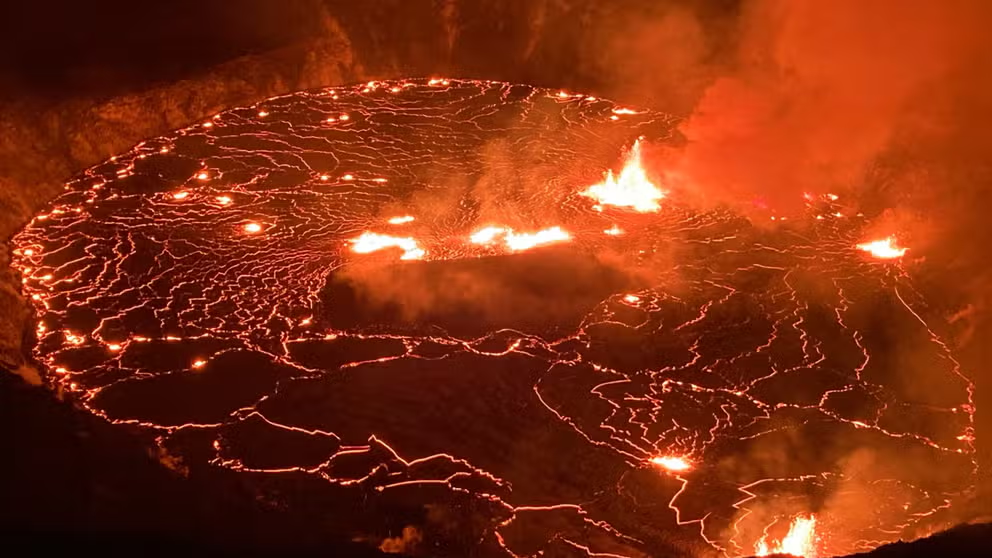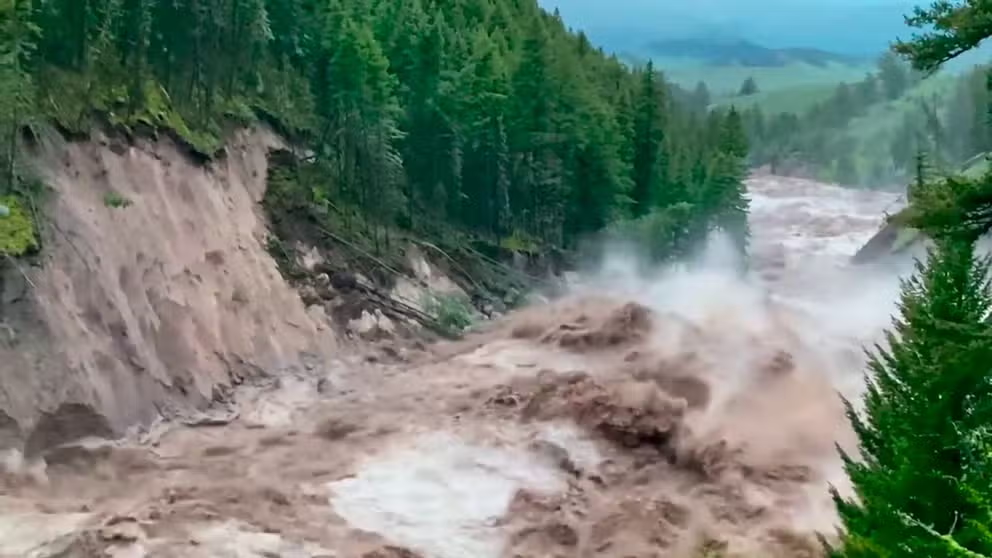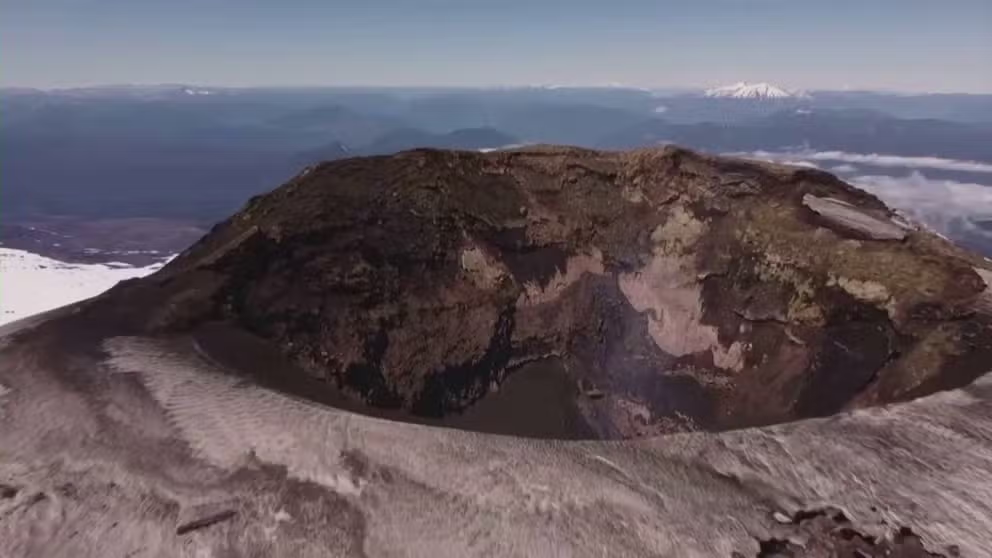Yellowstone volcano eruption more complex than scientists previously thought, report says
Thousands of earthquakes, catastrophic flooding, a sinking caldera and a complex eruption are all details in the 2022 report
Yellowstone National Park
A look at the United States' first National Park: Yellowstone.
YELLOWSTONE NATIONAL PARK - Scientists with the Yellowstone Volcano Observatory (YVO) recently released their report of observations and discoveries made over the last year and have come across new evidence that suggests that the last major eruption at Yellowstone 631,000 years ago "was much more complex than previously thought" and more work will need to be completed to learn more details about the eruption’s history.
YVO has provided annual reports since 2017 that detail several topics, including ground deformation trends, earthquake activity and upgrades to its monitoring networks. There’s also information about research results and discoveries, such as the new thermal area near Tern Lake in 2018.
The Yellowstone Volcano Observatory 2022 Annual Report was released earlier this month, and like previous reports, it’s filled with eye-opening new research and observations.
Yellowstone recorded thousands of earthquakes in 2022
Why earthquakes are felt differently in the US
While you may think quakes are a western US problem, some of the largest temblors in US history have happened in the East.
According to the YVO report, 2,429 earthquakes were recorded in the Yellowstone region in 2022, the largest of which was a magnitude 4.2 that occurred on May 11.
According to the report, that was the largest reported in the region since a magnitude 4.4 in 2017.
Scientists stress, however, that the number of earthquakes in 2022 was within the range of annual earthquakes and was slightly less than what was reported in 2021.
"About 66 percent of the earthquakes took place in swarms, which are groupings of earthquakes that are clustered together in both space and time," the YVO said in a report.
One such swarm took place over a 12-hour period in March, with 60 earthquakes ranging from magnitude 0.1 to 3.7 detected.
The most significant swarm, however, lasted the entire second half of the year near Grizzly Lake between Mammoth Hot Springs and Norris Geyser Basin when more than 1,100 earthquakes were reported.
"Earthquake swarms with hundreds to thousands of events and lasting for months are not unusual in the Yellowstone region, occurring every few years," the report continued.
7 THINGS TO KNOW ABOUT YELLOWSTONE NATIONAL PARK
Yellowstone Caldera continues to sink
Kilauea volcano erupting on Hawaii's Big Island
For the first time since May, Hawaii's Kilauea volcano started erupting Wednesday afternoon.
According to the report, the Yellowstone Caldera subsided by 1–2 inches throughout 2022. That was interrupted during the summer months by a pause in uplift as the ground swelled slightly due to a recharge in groundwater from snowmelt.
According to the National Park Service, calderas are collapse features that form during large-volume volcanic eruptions when the underlying magma chamber is emptied and the ground above it sinks into it.
Catastrophic flooding in Yellowstone
Watch: Video shows raging rivers, destruction from catastrophic Yellowstone flooding
The National Park Service released a video showing raging rivers and destruction as the result of catastrophic and devastating flooding at Yellowstone National Park in June.
An atmospheric river event in June rapidly melted the snowpack and led to catastrophic flooding across the Yellowstone region, leading to the closure of the entire national park.
The north and northeast entrance roads remained closed for the entire summer, with the north entrance not being reopened until the end of October – more than four months after the flooding event.
The flooding was so intense that the YVO said monitoring stations recorded seismic noise associated with the floodwaters.
Yellowstone eruption 'much more complex than previously thought'
Watch: Drone footage shows Chile's Villarrica volcano spewing gas, lava
Chile’s Villarrica volcano has been showing signs of increasing activity and drone footage shows the volcano spewing gas and lava.
The report also details information uncovered by YVO scientists that are changing how they think about the last major eruption at Yellowstone 631,000 years ago.
Scientists said the ash deposit that resulted from the explosion, called the Lava Creek Tuff, was initially believed to be two geological subunits, according to a report.
However, Montana State University geologists identified several new units of the Lava Creek Tuff while mapping the rocks on the Sour Creek dome on the eastern side of the Yellowstone Caldera.
"This discovery implies that the eruption was much more complex than previously thought," the report says. "Additional work is needed to sort out the eruption’s history."
